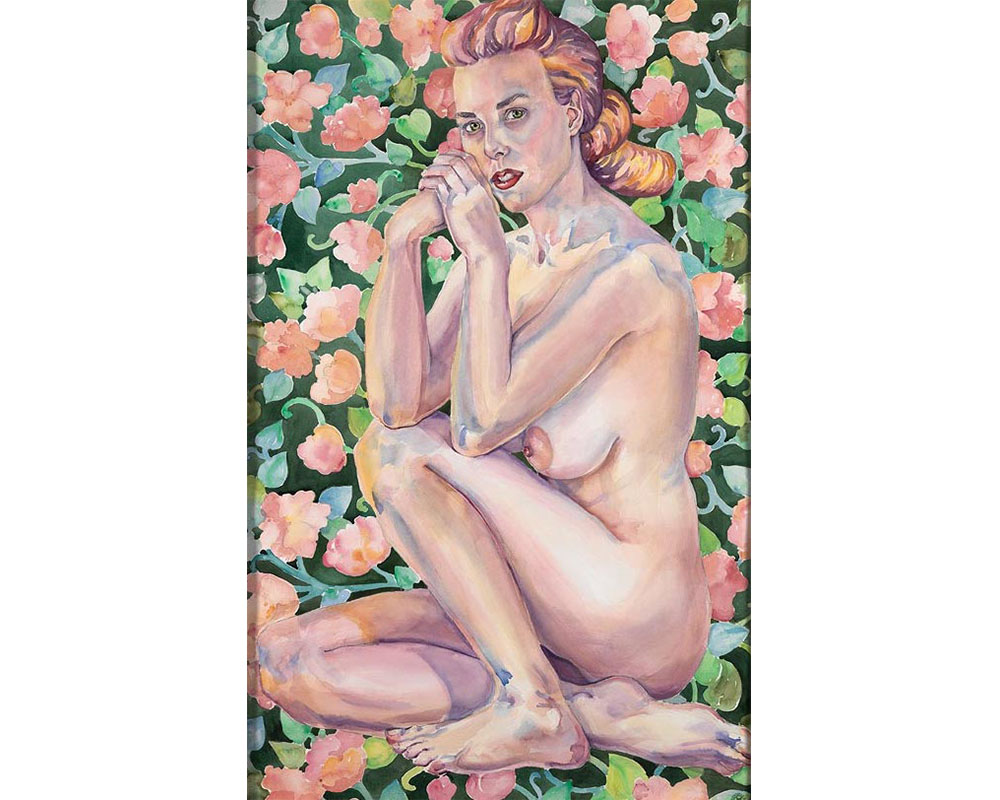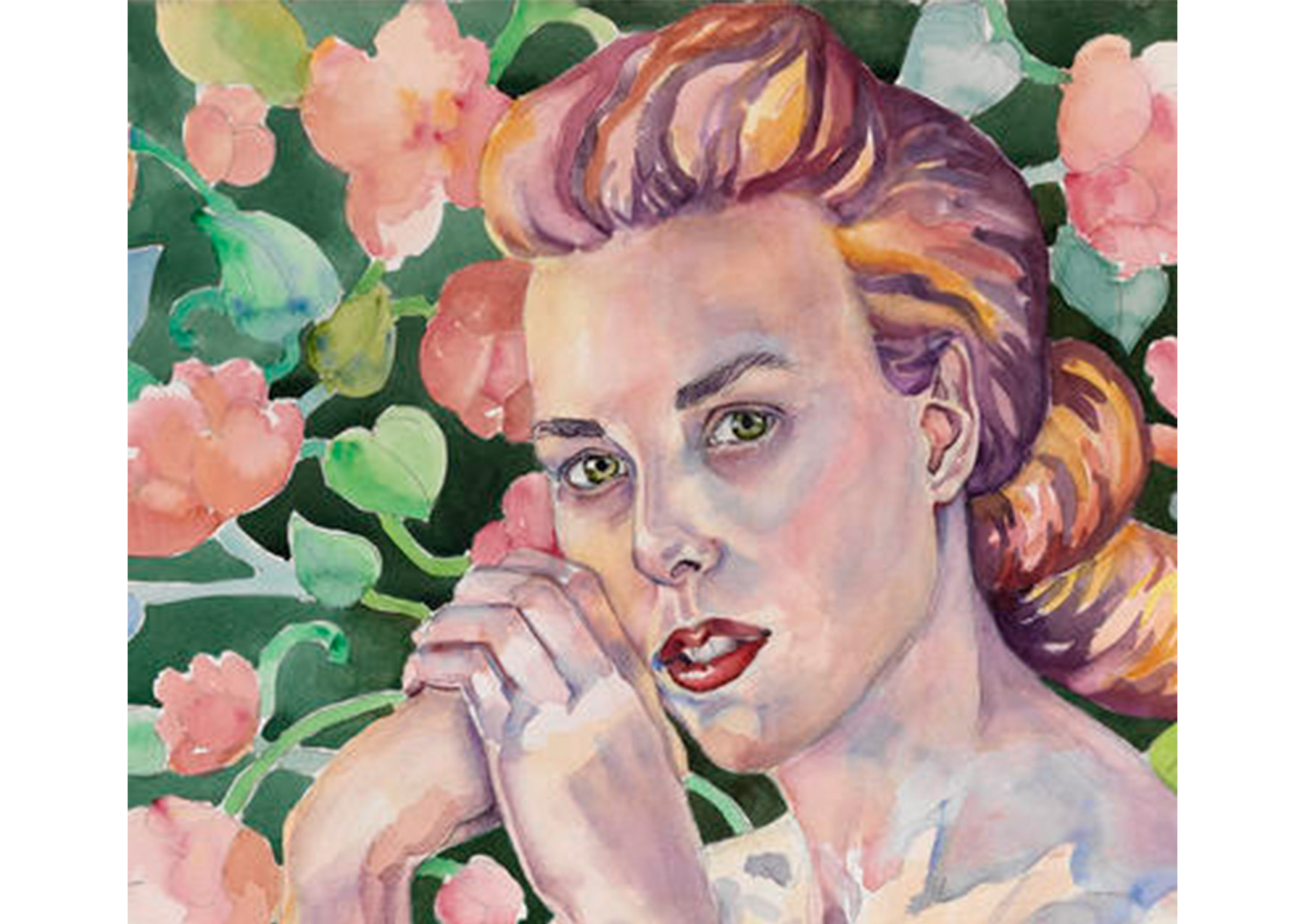
Persephone: Rebirth of Spring
Maggie Kurkoski is a member of the Smith College class of 2012 and the Brown Post-Baccalaureate Curatorial Fellow in the Cunningham Center.
Holly Trostle Brigham (Smith College class of ’88) explores her own identity through the solitary female figure, and during the 1990s focused on women through the lens of ancient mythology. The Museum owns one work from her, a watercolor titled Persephone: Rebirth of Spring.
The title alludes to the ancient Greek myth of Persephone, the young daughter of the goddess Demeter. In most versions of the story, Persephone was picking flowers in a field when Hades, the god of the underworld, kidnapped her. He brought her down into the underworld and forced her to stay. Distraught and confused, Demeter went searching for her lost daughter, and neglected her divine duties as the goddess of fertility and agriculture. Crops began to fail worldwide, and humanity starved. Still, one god had seen the kidnapping: Helios, the sun. When he saw what was happening to the Earth, he finally told Demeter what had happened, and where her daughter had been taken.
Demeter forced Hades to return her daughter. By then, though, Persephone had made a crucial mistake. During the months she was trapped underground, the girl had tasted the food of the underworld, some pomegranate seeds. As a result, she was obliged to stay with Hades forever. Enraged, Demeter appealed to her brother Zeus, who created a compromise. Persephone would spend a third of the year with Hades, one month for each seed she had consumed, and Demeter could allow the crops to die during that time. The rest of the year she was free to be with her mother.
The myth is an etiological explanation for the cycle of fertility around the Mediterranean, a way to illuminate the change of the seasons. The return of Persephone from the underworld brought spring and fertility back to the world.
It is this moment that Holly Trostle Brigham illustrates in Persephone: Rebirth of Spring. Without the title, it would be nearly impossible to identify the work. Usually, artists depict Persephone with a pomegranate to indicate who she is, but this Persephone doesn’t have any props. She’s even naked – stripped of all clothes, she could from any culture or time period (although the red lipstick does look modern to me).

Detail of Persephone: Rebirth of Spring
Instead of making the woman a clear Persephone, Trostle Brigham created a lush scene that embodies the feeling of the Persephone myth. Behind the women is a cascade of blooming flowers. On some level, the artist is making a visual parallel between the fertility of nature and of the human body.
Still, the figure's direct gaze makes one pause. There's something in her eyes that makes it difficult to imagine her as the passive subject of a fight between Hades and Demeter, despite her vulnerable nudity. In its own way, the work is both a distillation of the Persephone myth down to its core elements, and a challenge of it, no pomegranate needed.